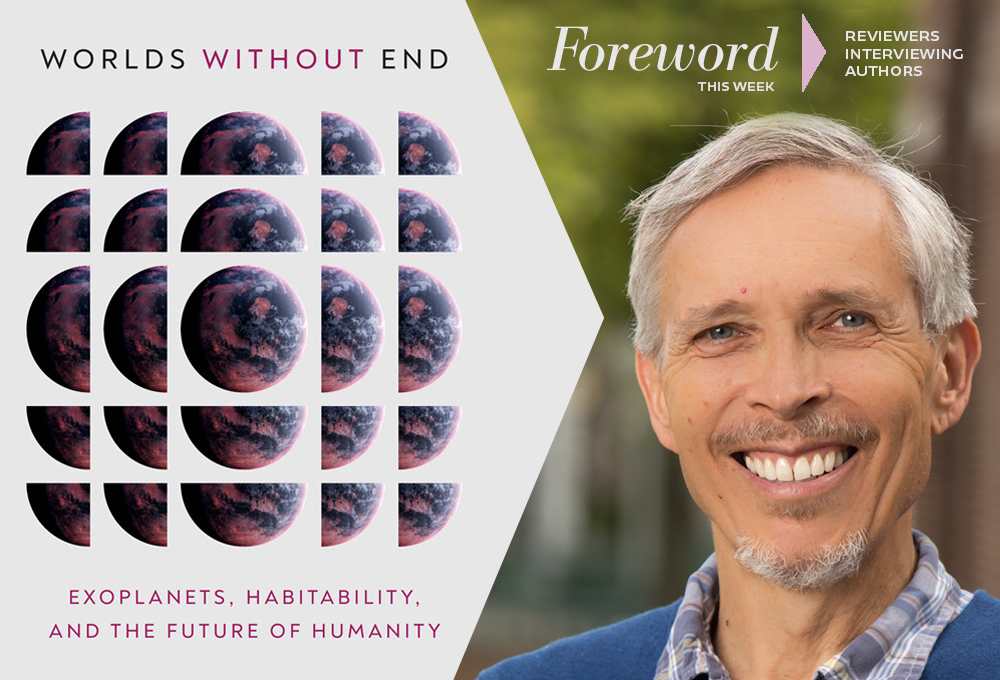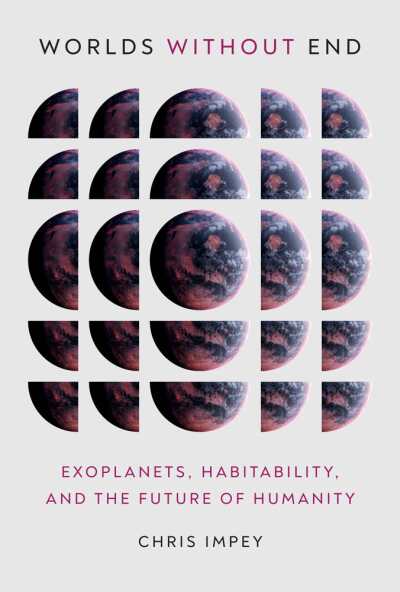It looks like you've stumbled upon a page meant to be read by our code instead of viewed directly. You're probably looking for this page.
Reviewer Kristen Rabe Interview Chris Impey, Author of Worlds Without End: Exoplanets, Habitability, and the Future of Humanity

As we do periodically, it’s time for another pause to drop jaw and acknowledge the stunning technological advances changing the way we understand our universe. What caught our attention is what’s happening in astronomy. Specifically, the way advanced instrumentation and ingenuity have helped us make extraordinary leaps in potentially discovering life on other planets.
According to today’s guest, Chris Impey, we now know that “Earth-like planets are fairly common. One in six stars in the Milky Way galaxy has one, and we have already found dozens of planets that might be habitable. That is, they’re at the right distance from their stars for liquid water to exist on their surfaces. Finding a true Earth clone is not far off.”
Imagine that New York Times headline: ALIEN LIFE DISCOVERED.

Chris’s new book is Worlds Without End, which earned a starlit review from Kristen Rabe in Foreword’s May/June issue. Enjoy their chat.
More than five-thousand planets have been discovered outside our solar system, as your book explains. What’s involved in detecting these small blue dots in the Milky Way and distant galaxies? How many more planets are yet to be discovered?
For decades, astronomers tried and failed to find planets around stars other than the Sun. Because a planet is illuminated only by reflected light, it is hundreds of millions of times fainter than the star it orbits. All 5,300 exoplanets discovered so far have been found since 1995, which indicates just how difficult this task is.
With their feeble light, exoplanets are rarely detected through a visual image. In the few cases where an image exists, it is just a dot or a single pixel. Instead, astronomers have had to develop special techniques to detect exoplanets, with calculations that are indirect. They typically find a planet because its gravity tugs slightly on the star, or because the planet briefly eclipses the star during its orbit.
Almost all the exoplanets we’ve discovered are within a few thousand light years of Earth, so they are in our galaxy or, basically, in our backyard. Scientists project that every star has at least one planet, which means that there are hundreds of billions of planets in the Milky Way galaxy and similar numbers in other galaxies.
Your book features captivating profiles of astronomers who search for distant planets. Give a few examples of scientists who are drawn to this challenging work.
With so much yet to be explored, astronomers are pursuing a variety of approaches and technologies. Michel Mayor, the Swiss astronomer who won a Nobel Prize for discovering the first exoplanet in 1995, is drawn to advancing the power and precision of astronomical instruments. His spectrographs have improved our ability to detect the way an orbiting planet shifts the radial velocity of a star. His work has increased this capacity by a factor of a hundred.
Lisa Kaltenegger, who directs the Sagan Institute at Cornell, wants to understand the habitability of an exoplanet and how it changes over time. When you think about it, the Earth’s habitability has changed dramatically over the billions of years this planet has existed. Other planets may be in a relatively early stage or late stage in this progression.
Sara Seager, a professor at the Massachusetts Institute of Technology and a MacArthur Fellow, is arguing for a new exploratory spacecraft that would have a starshade to block out starlight. This would allow scientists to search the planet’s atmosphere for gases that are caused by biological processes, which would indicate some form of life.
How do exoplanets compare with the eight planets orbiting our sun? How likely is it that scientists will find an Earth clone?
So far, it appears that our solar system may be atypical. The most common type of exoplanet is a super-Earth, that is, a planet that’s two to three times Earth’s size and four to six times its mass. Our solar system has no planet between Earth and Venus or between Uranus and Neptune, which is typically where you’d find a super-Earth. Scientists have also found a number of hot Jupiters orbiting other stars: these are massive gas planets orbiting much closer to their stars than Mercury is to the Sun.
Despite these differences, Earth-like planets are fairly common. One in six stars in the Milky Way galaxy has one, and we have already found dozens of planets that might be habitable. That is, they’re at the right distance from their stars for liquid water to exist on their surfaces. Finding a true Earth clone is not far off.
Astrobiologists have devised ingenious methods to speculate about the habitability of exoplanets. How do scientists evaluate the potential for life on other planets?
Habitability is normally defined in a very limited and traditional way: scientists are seeking a rocky planet that is the right distance from its star to have liquid water on its surface. So, most astrobiologists consider liquid water the prime requirement for life, since we know all life on Earth uses or needs water. This focus ignores the atmosphere’s effect on warming the planet (which is generally unknown), and it assumes the orbit is consistent enough to avoid large temperature swings.
It’s possible that planets and moons with very cold surfaces may be habitable somewhere below the surface or that deep ocean environments may have hydrothermal vents like those on Earth that can host entire ecosystems. But we’re still early in the process of evaluating habitability, and we don’t have enough information to make those determinations.
Your book also examines moons—those in our own solar system as well as those orbiting exoplanets. What are we learning about planetary moons, and how likely is it that they could support life?
Moons in the outer parts of our solar system sometimes have all the ingredients for life: carbon-rich material, liquid water, and a local energy source. Perhaps a dozen moons have potentially habitable locations, including moons of Uranus and Neptune, though we still have much to learn about them. The best candidates for life are Jupiter’s Europa, Saturn’s tiny Enceladus, and Saturn’s large moon Titan (for a weird version of biology). If what we’re seeing in our solar system is typical, we should expect that there are habitable exomoons (or moons orbiting exoplanets). They are extremely difficult to detect, however, so this is research for the future.
You include a fascinating history of philosophers and writers who have pondered the nature of the universe, from ancient Romans to Isaac Asimov and James Cameron. Talk about the intersection of science and the imagination. How does art help us think more expansively about our planet and what’s beyond?
Astrobiology is the perfect subject for creative speculation since we know only one example of biology. The universe has probably conducted some wild and bizarre experiments given all the habitable real estate and vast spans of time. For example, an Earth clone could have formed eight billion years before the Earth did, and so it would have had that much head start for evolving creatures. Weird biology is on the table, as well as forms of life we might not even recognize. Art helps us imagine and visualize what might be possible as opposed to what is.
Kristen Rabe